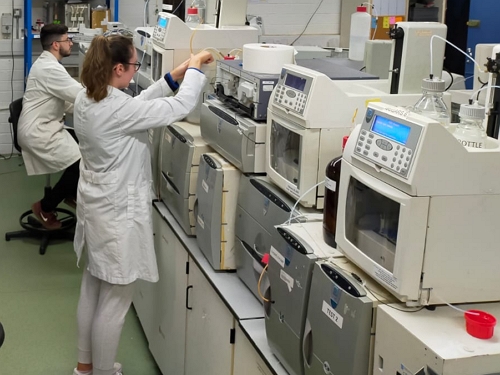Analysis of Glutamic Acid
Glutamic acid (2-Aminopentanedioic acid) is an acidic and polar alpha-amino acid.
L-glutamic acid is the most prevalent optical isomer. It is one of the building blocks of protein.
In the human body, glutamic acid serves many crucial roles as a neurotransmitter and precursor for metabolites, including glutathione and GABA.
Glutamic acid is one of the highest produced amino acids worldwide. Glutamic acid is a widely used food additive as a flavour enhancer and is denoted by E620. It is also an EU approved feed additive.
Bacterial species belonging to Corynebacterium, Brevibacterium, Microbacterium and Arthrobacter genera have been reported to produce L-glutamic acid. L-glutamic acid is commercially-produced by fermentation from a glucose-containing medium using Corynebacterium glutamicum.
Edible seaweeds such as kombu (Saccharina japonica), Nori (Pyropia yezoensis and Pyropia tenera), sea tangle Laminaria japonica) contain free glutamic acid abundantly. The presence of free glutamic acid in seaweeds imparts their characteristic umami flavour.
In the human body, glutamic acid serves many crucial roles as a neurotransmitter and precursor for metabolites, including glutathione and GABA.
Glutamic acid is one of the highest produced amino acids worldwide. Glutamic acid is a widely used food additive as a flavour enhancer and is denoted by E620. It is also an EU approved feed additive.
Bacterial species belonging to Corynebacterium, Brevibacterium, Microbacterium and Arthrobacter genera have been reported to produce L-glutamic acid. L-glutamic acid is commercially-produced by fermentation from a glucose-containing medium using Corynebacterium glutamicum.
Edible seaweeds such as kombu (Saccharina japonica), Nori (Pyropia yezoensis and Pyropia tenera), sea tangle Laminaria japonica) contain free glutamic acid abundantly. The presence of free glutamic acid in seaweeds imparts their characteristic umami flavour.
Click here to place an order for determining Glutamic Acid.
Request a QuoteGlutamic Acid Content
Analysis Packages for Glutamic Acid
Equipment Used for Glutamic Acid Analysis

Ion Chromatography
A Dionex ICS-3000 system that is equipmed with electrochemical, conductivity, and ultraviolet-visible detectors.




